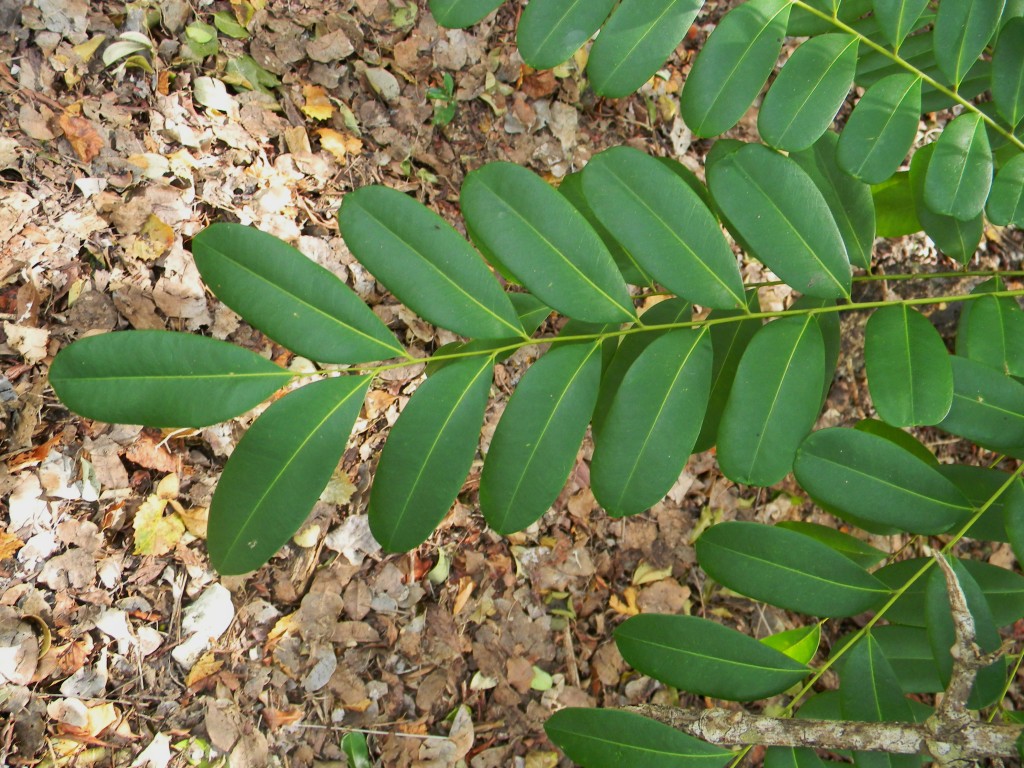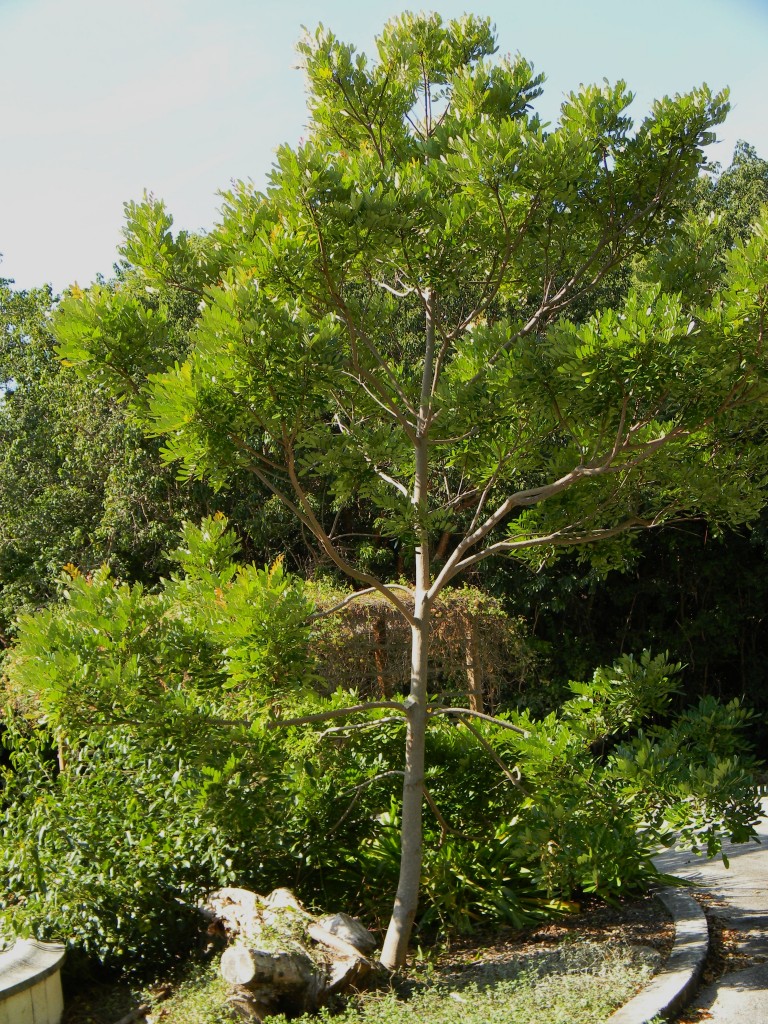Paradise Tree
Simarouba glauca
Plant Family: Simaroubaceae
Leaves: Alternate, once-compound, with 10 to 14 oval to oblong leaflets, glossy green above, gray beneath; sometimes there is a terminal leaflet (as shown), new growth is shiny red.
Bark: Gray-brown, smooth on younger trees, somewhat rougher on mature trees.
Flowers: Dioecious, yellow, small, in open clusters from the leaf axils; from late winter into spring.
Fruits: A rounded red drupe that ripens to purple-black, to 2.5 cm long, edible and eaten by birds; from late spring into summer.
Habitat: Coastal hammocks, it is also cultivated for its attractive form.
Growth Form: Medium-sized tree.
Key Features: The straight-trunked form (never shrubby) combined with the alternate, shiny, compound leaves with oval leaflets will separate Paradise Tree from other compound leaved species.
Comments: Paradise Tree is a fast-growing tree with a narrow diameter trunk that may reach canopy height. In Central and South America the bark is used as an herbal medicine and the black seeds are harvested to produce vegetable oil for culinary purposes.


